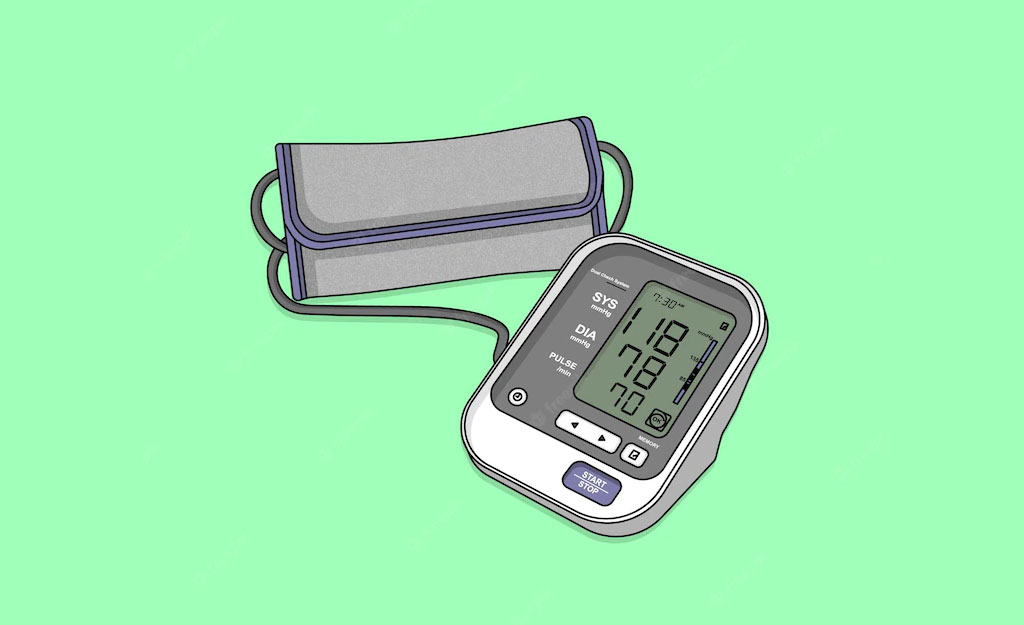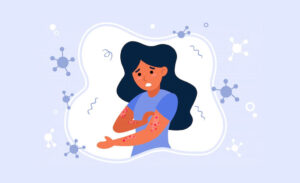How to check blood pressure by yourself? It would help if you had this question in your mind, and it should be. Because with increasing technology, almost everything has become more accessible, faster, and more accurate to use. The same thing goes for medical equipment. A blood pressure digital apparatus is one of the best examples of it. This device eliminates the need to go to the clinic every time to monitor if your blood pressure is normal, high, or low. It is perfect for women’s health because they are often unable to leave their house and, as a result, they neglect monitoring blood pressure just because of that reason, which ultimately means not to maintain health.
What is Blood Pressure?
Whether you are a blood pressure patient or you have a family that has a high blood pressure problem, in both cases, you must know about what blood pressure is, what the severities and treatments are and how to check blood pressure at home.
Blood pressure is a measurement of your heart’s resource to pump blood against your arteries’ wall, and all body parts get blood from your heart.
Four vital signs indicate how well your body and its organs are performing. Blood pressure is one of them that demonstrates how your heart is pumping blood in your blood vessels. And the other signs are:
- Breathing rate
- Body temperature
- Heart rate
These signs help you understand how your body is working. If any of them shows too high or too low a level of working, it means that something is going wrong, and you should visit your doctor for immediate treatment and further advice.
High Blood Pressure (Hypertension):
In high blood pressure, your blood vessels, also known as arteries, get narrowed down; as a result, this resists blood from flowing through your arteries approaching all your body parts. The narrower your vessels are, the blood flow faces more resistance and high the blood flow pressure. Consistency of this condition can cause health issues, including heart disease.
Symptoms of High Blood Pressure (Hypertension):
Hypertension generally develops over a long period of time, around seven years. You usually are not aware of any symptoms of hypertension. Some people with hypertension may have headaches, nosebleeds, difficulty in breathing, but these symptoms usually don’t occur until a high blood pressure level has reached its severe stage. The best way to know if you have a high blood pressure issue or not is to check blood pressure regularly or visit any doctor for any issue that has blood pressure apparatus in the clinic and standardized to check every patient’s blood pressure first.
Treatment of High Blood Pressure (Hypertension):
It is good to detect this problem early, and regular blood pressure check ups will help you and your doctor observe any changes. Your doctor may suggest you check your blood pressure over a few days to see if the number remains the same or back to normal condition.
In treating high blood pressure, your doctor may suggest medicines and maintain a healthy lifestyle both. If left untreated, it may cause health issues, such as heart attack and stroke.
Related Article: Benefits of Keep Your Heart Healthy and its Tips
Low Blood Pressure (Hypotension):
Low blood pressure (hypotension) signifies the pressure of blood supply gets lower than usual. Hypotension is the scientific name of lower blood pressure. Usually, it is defined as blood pressure in adults in the reading of lower than 90 over 60. Low blood pressure makes you feel tired or dizzy. It is mostly temporary, but it also can be a chronic disease.
Following are the main types of low blood pressure:
- Orthostatic hypotension
- Neurally mediated hypotension
- Severe hypotension
- Postprandial hypotension
Symptoms of Low Blood Pressure (Hypotension):
Symptoms of low blood pressure don’t always occur. But sometimes, it is an indication that your body’s vital organs are not receiving enough blood as much as they require. In this situation, you may feel tired or sick. The symptoms of low blood pressure are below:
- Lack of energy and feeling tired.
- Off-balance feeling in different positions.
- Feeling an unwell condition in your stomach.
- Persistent sadness or low mood.
- Feel lightheadedness, and you might faint.
- Lack of consciousness, syncope, and faint
- Eyesight is focused less, and vision is blurry.
Treatment of Low Blood Pressure (Hypotension):
Doctors treat hypotension depending upon the type of hypotension you have and the cause of this condition. Usually, it doesn’t occur due to any symptoms. In treating low blood pressure, doctors suggest you change your lifestyle because changing your lifestyle and your habits can improve hypotension. So, doctors may suggest noting your feelings in real-time and drinking water frequently to prevent dehydration, especially if you have diarrhea problems.
How to Check Blood Pressure?
So, now you know almost well about what blood pressure is. Now we will discuss how to check blood pressure with the machine. Good to know one thing before discussing the method of blood pressure check: reading of blood pressure.
How to Take Reading of Blood Pressure?
The measurement of blood pressure is based on millimeters of mercury (mmHg), and it is divided into two figures:
– Systolic Pressure:
During your heartbeat, your heart forces the blood out into the vessels. In medical terms, this process is called systole, which is why this type of reading is called systolic blood pressure. It is measured as a higher (upper pressure). Doctors consider it normal systolic blood pressure when the reading is 120 mmHg or slightly below.
– Diastolic Pressure:
The heart takes rest for a moment right after pushing blood into arteries so that your heart can be refilled with blood to pump it again. In medical terms, this break for a moment is called diastole. Diastolic pressure is measured during this break, and when your blood pressure reading shows that diastolic pressure is 80 mmHg or slightly below, it is considered normal diastolic blood pressure.
For instance, your blood pressure reading shows 140/90mmHg or “140 over 90”, It means that your systolic pressure is 140mmHg, and your diastolic pressure is 90mmHg.
Now, let’s take a look at checking blood pressure by using two types of blood pressure monitoring machines.
How to Check Blood Pressure by Digital/Automatic Monitor?
According to the American Heart Association, a digital B.P monitor is recommended at home. So, it is the easiest way to check your blood pressure yourself by using a digital/automated blood pressure monitor. There is a step-by-step guide about how to check blood pressure using a digital machine.
– Be Quiet:
Before reading your blood pressure, don’t smoke, drink caffeine and alcohol, or exercise for at least 30 minutes. Before taking measures, make sure your bladder is empty and that you have at least 5 minutes of uninterrupted.
– Sit Properly:
Sit straightly with your back support on any regular chair instead of a sofa or other comforter. Flat your feet on the floor and uncross your legs. Put your arm on the table or any flat surface and level your upper arm to your heart. The bottom side of the cuff should be right above the bend of your elbow. Now take your blood pressure reading by the guidelines of your B.P monitor device accordingly. Remember that do not take a blood pressure reading over the cloth!
– Take Multiple Readings and Keep Track of Your Results:
When you take the reading, take 2 – 3 readings more with pausing of 1 minute and keep the record of each reading and transfer it digitally if your device has a feature to record reading in its memory or share them to the given software. Carry this record to your doctor.
– Take Reading Each Day, at the Same Time:
It is very crucial to take your Blood pressure readings daily at the same time. For instance, you took a reading at 7 pm; you should retake your next-day reading at 7 pm. It is good to take your B.P reading in a daily routine till your next visit to the doctor.
If you think you should have a digital B.P monitor for you or your loved ones, you are suggested to buy our BM – 58, which also has a feature to share your reading record with your PC. You can get this useful device in multiple price ranges at our online medical store. Ahmed Medico, is the best online pharmacy in Karachi. We offer our services all over Pakistan.
How to Check Blood Pressure by Manual/Analog Blood pressure Machine?
To take your blood pressure reading manually, you need to have these things on the table:
- Blood pressure cuff and a squeezable balloon.
- Analog monitor/sphygmomanometer.
- Stethoscope
It is a little more difficult than automatic when you check blood pressure manually, especially when checking your own.
– Be Relaxed and Sit Properly:
Be relaxed before taking a blood pressure reading, take a straight position of your arm, and face up your palm on a surface level. Place the cuff on your bicep and inflate the cuff by squeezing the balloon. Watching the numbers showing on the aneroid meter, inflate the cuff up to 20-30 mmHg above your average blood pressure. But if you do not know how your moderate blood pressure is, ask your doctor; the doctor will tell you how much you should inflate the cuff.
– Use the Stethoscope:
After inflating the cuff, check the earpiece of the stethoscope by tapping your finger on it. Then place the flat side of the stethoscope inside the crease of your elbow, facing the inner part of your arm where the major arm vessels are going through.
– Note the Reading:
When you hear the very first “whoosh” of the blood flow by the stethoscope, note the current number, this is your systolic pressure’s reading. Then immediately deflate the balloon slowly. You will be hearing the sound of blood pulsing. Keep listening to that sound and let the balloon deflate until the beat stops. When the beat stops, note the reading. This is your diastolic blood pressure reading. You keep the record such as 120 over 80 or 120/80.
Conclusion:
The question about how to check blood pressure may have been answered hopefully. We all need to be aware of this disease as there is a huge number of people becoming victims of blood pressure in Pakistan.




















